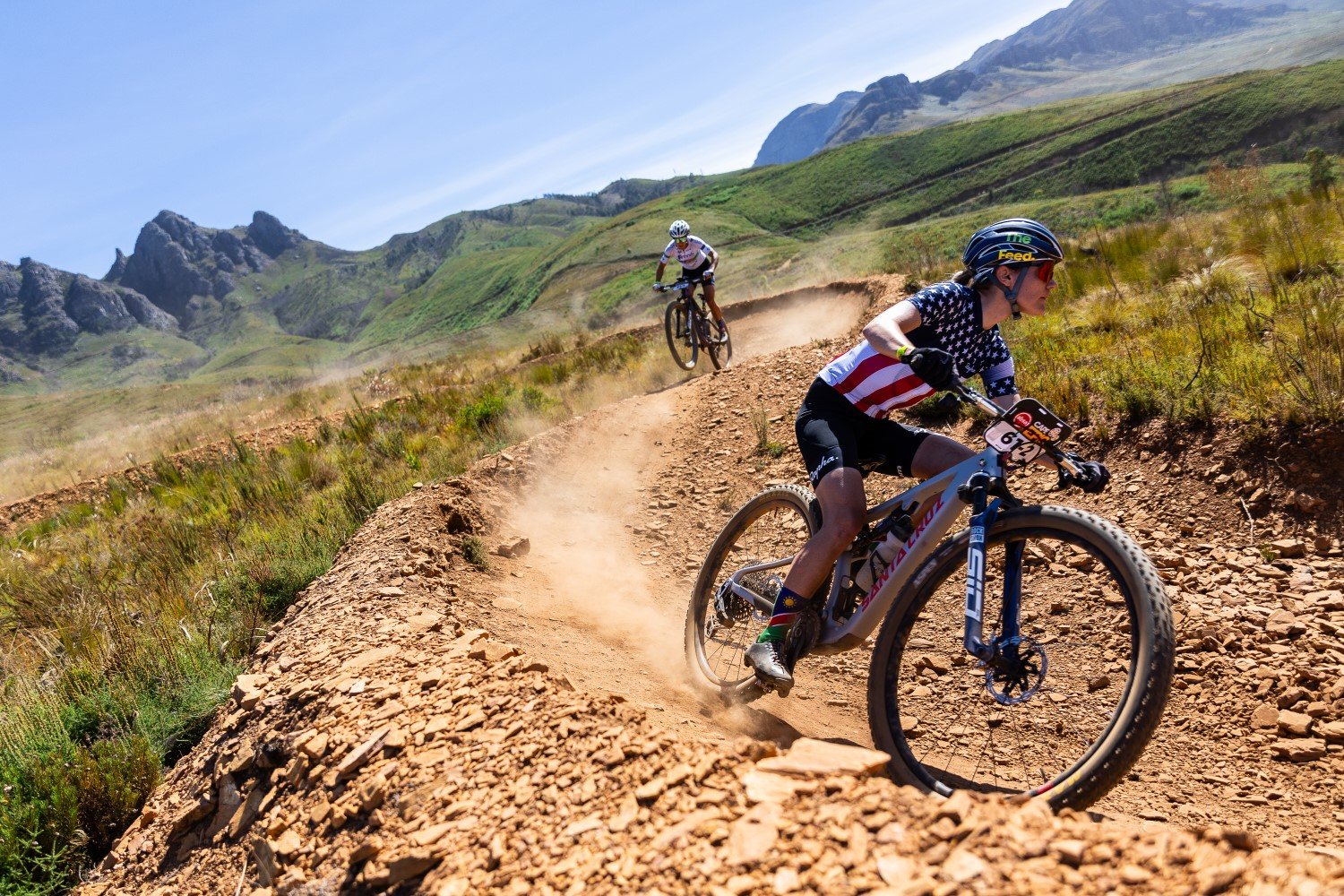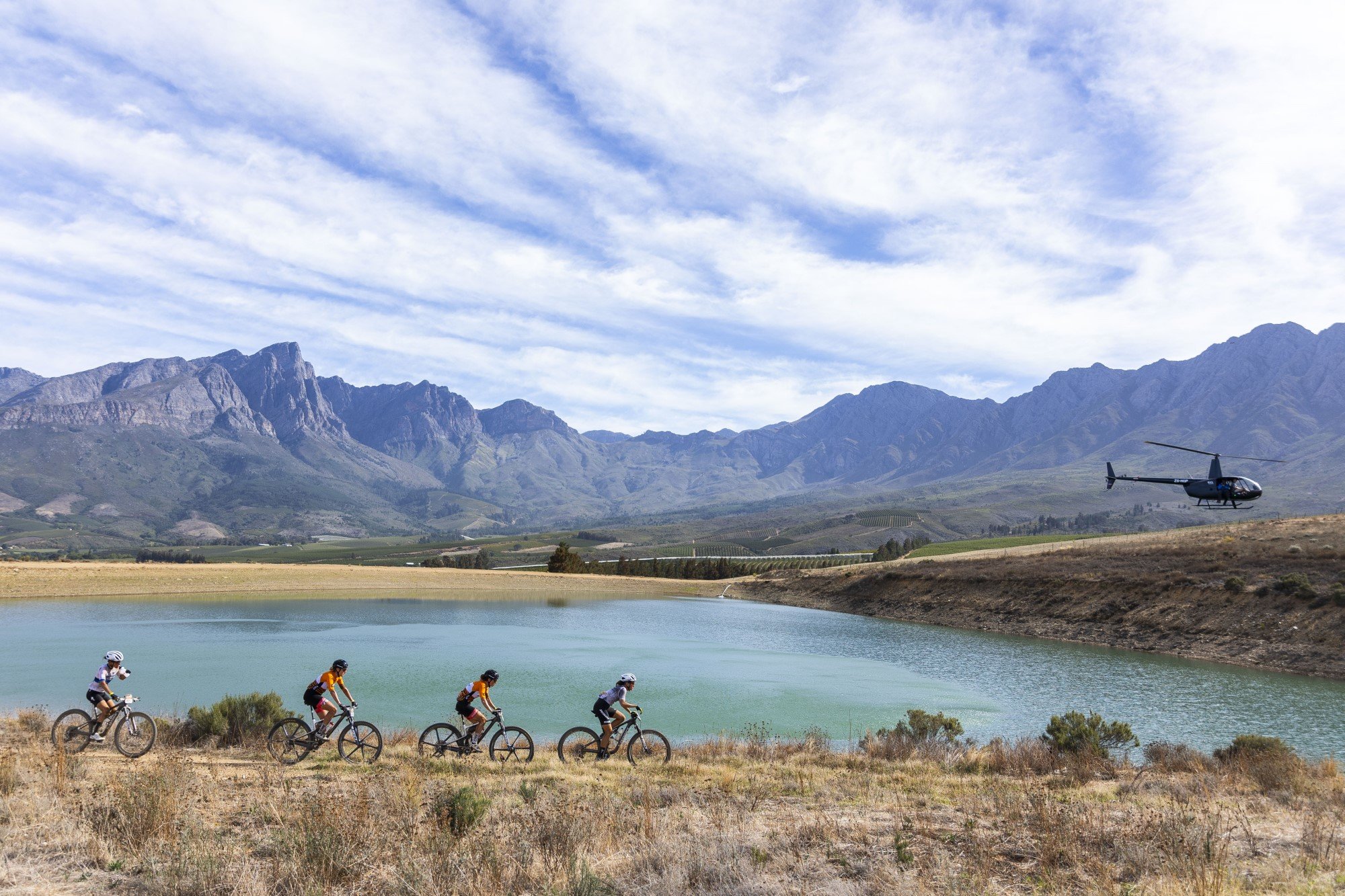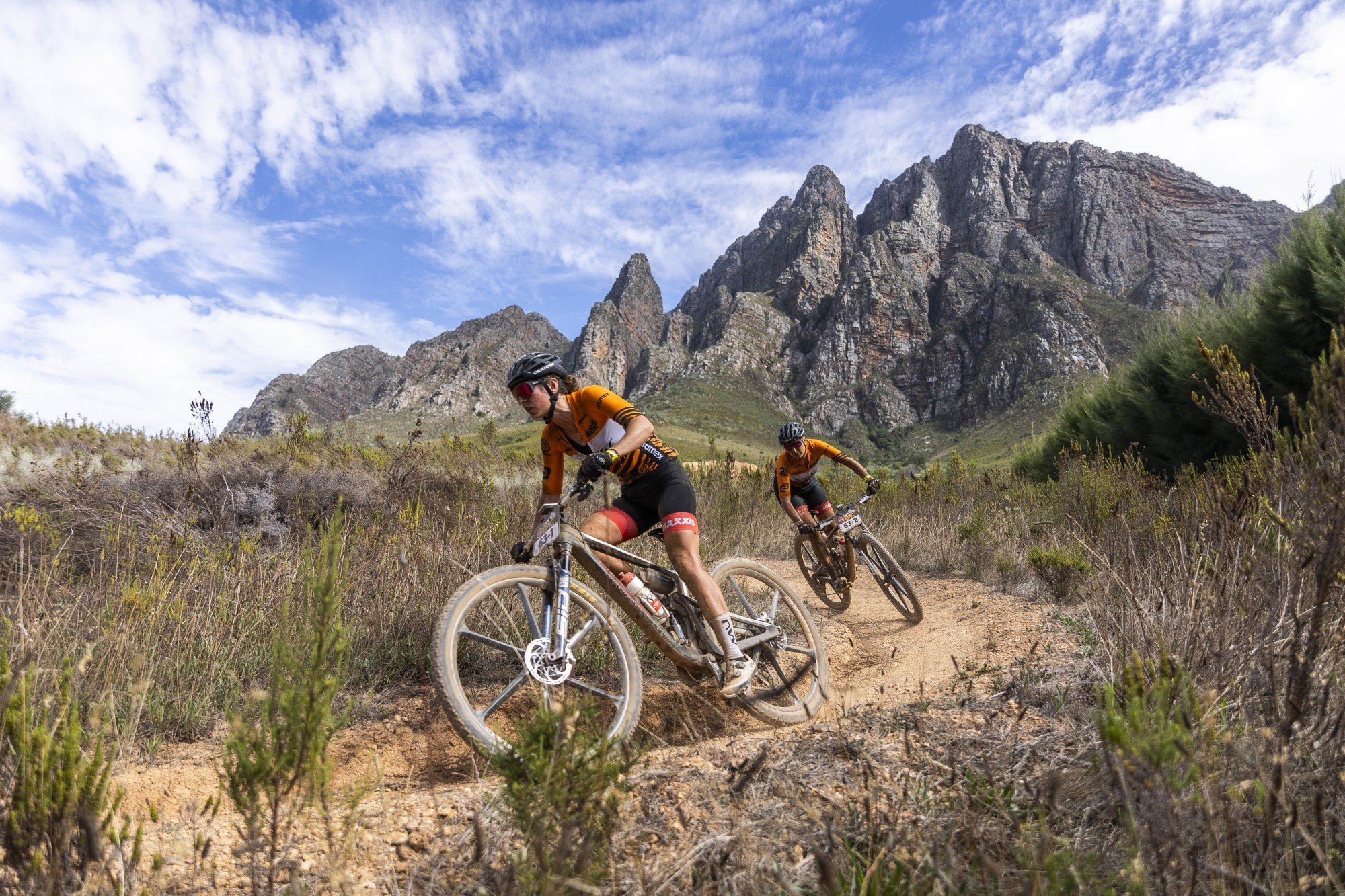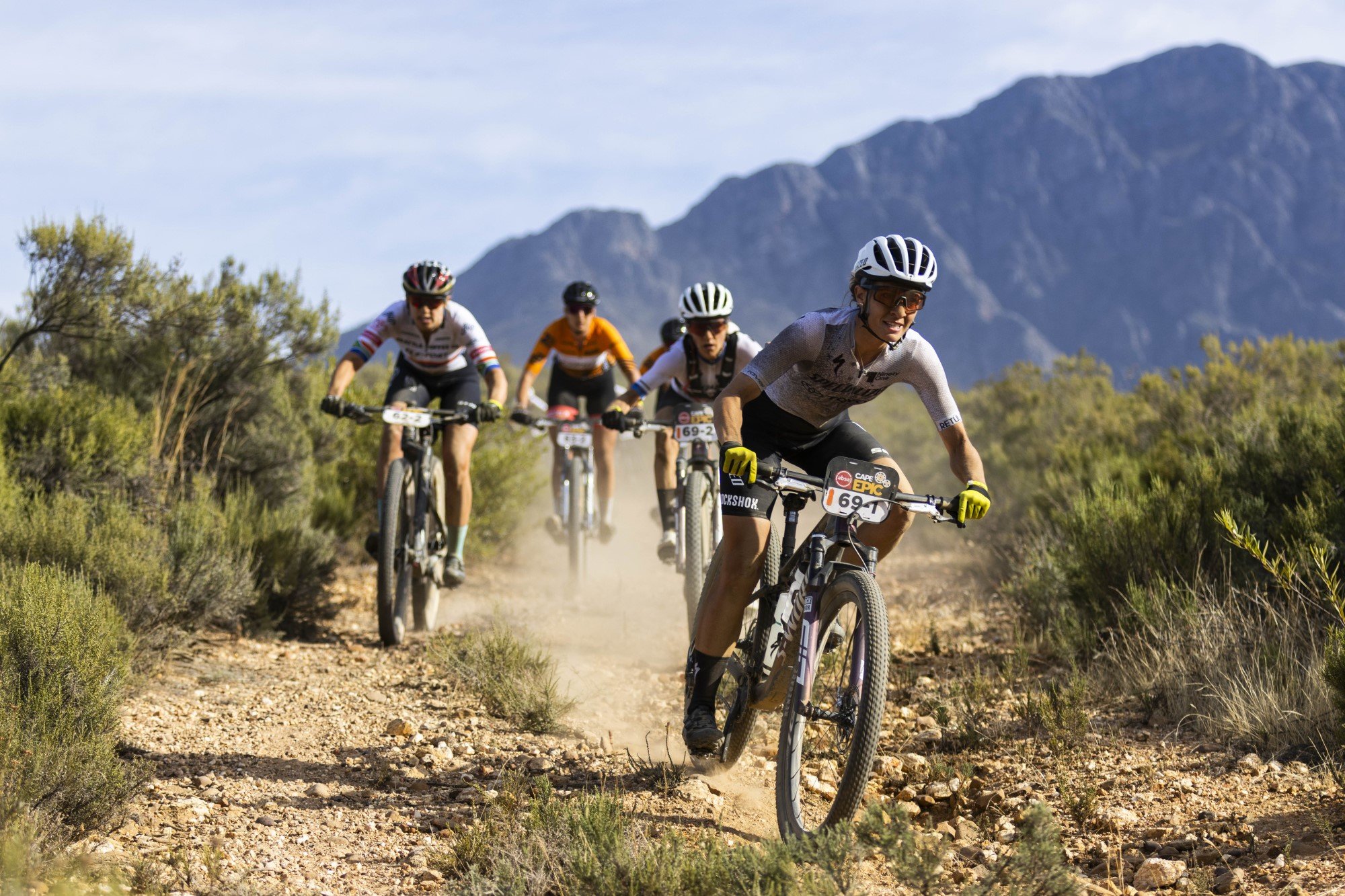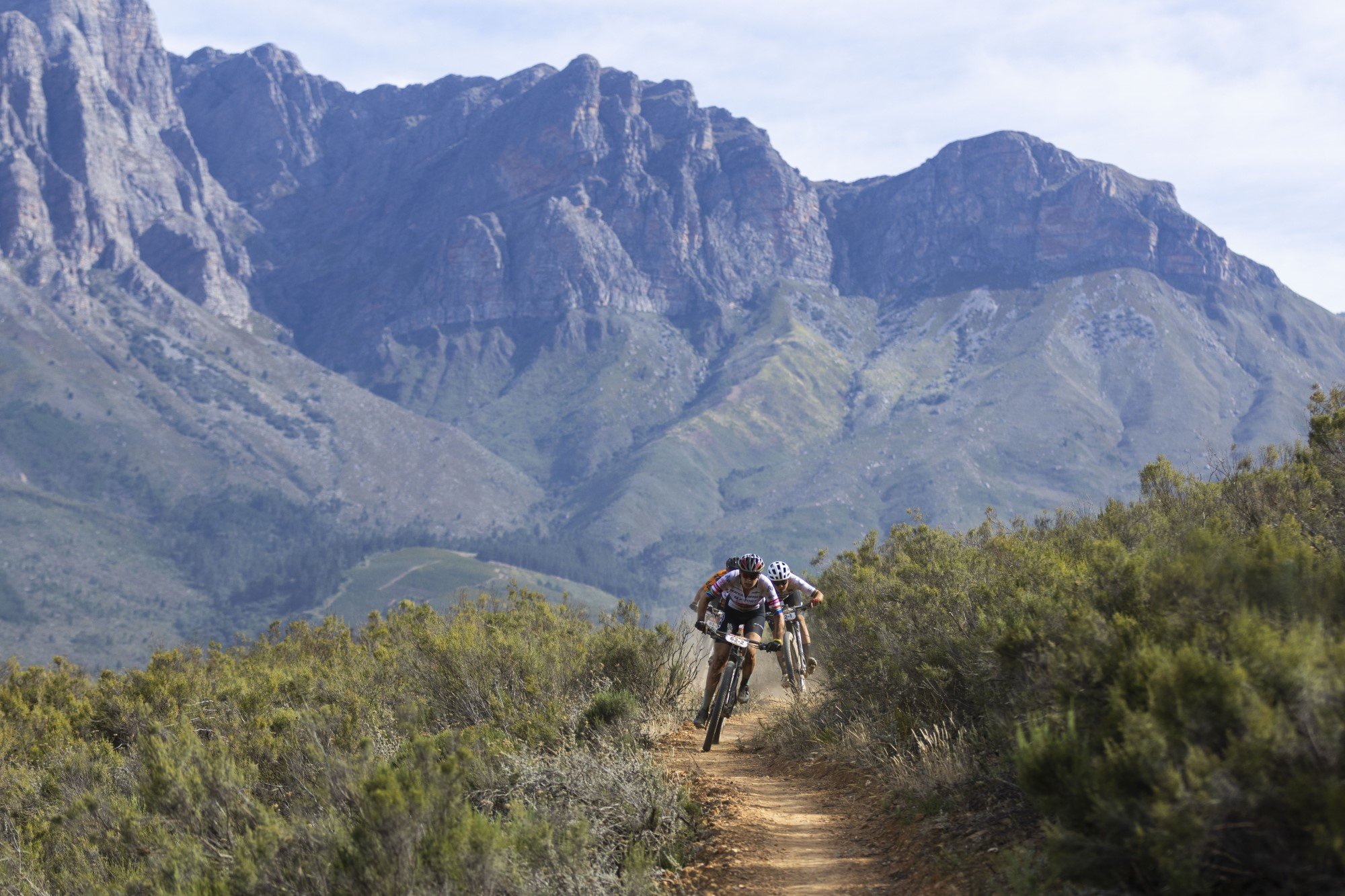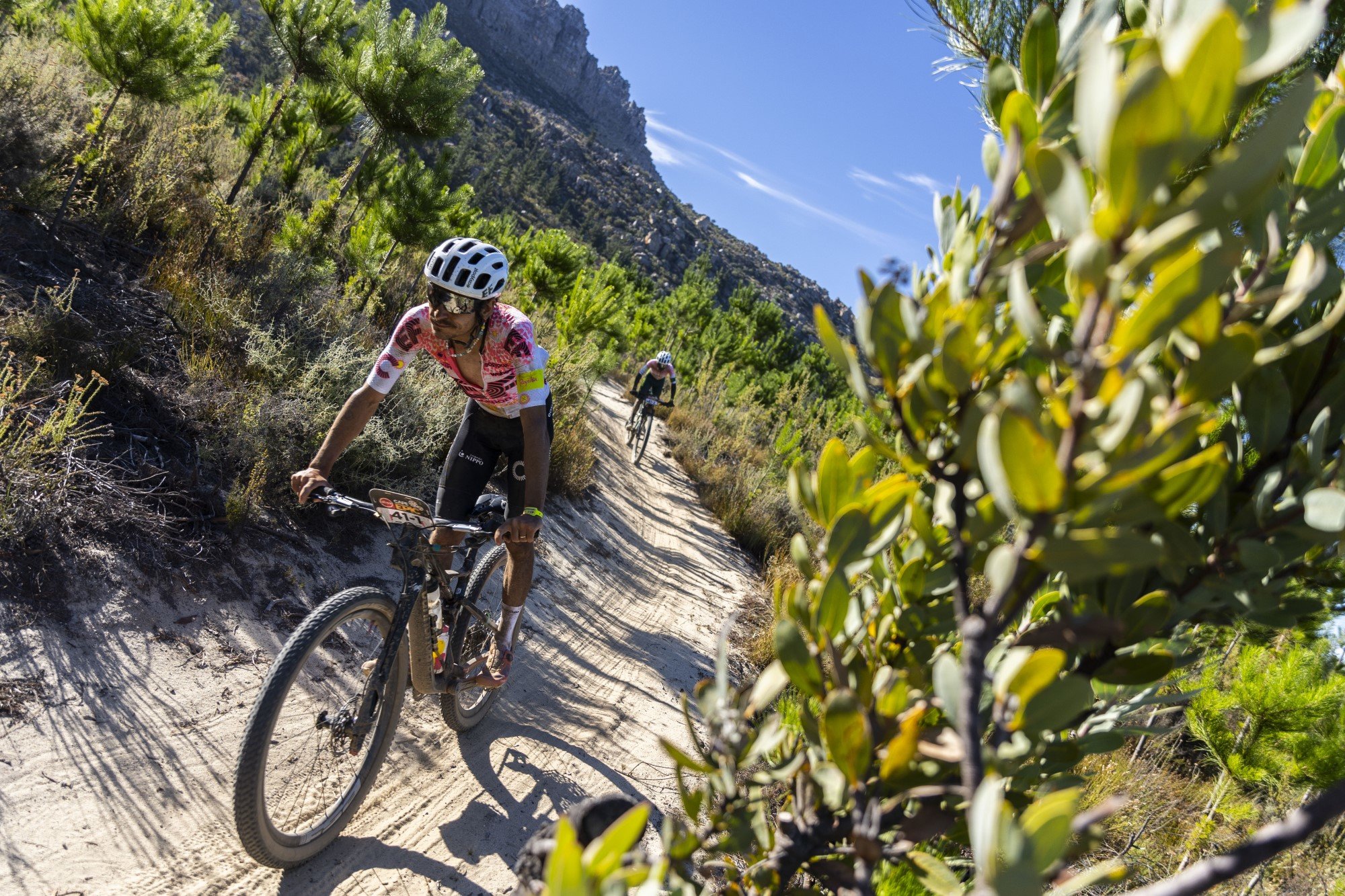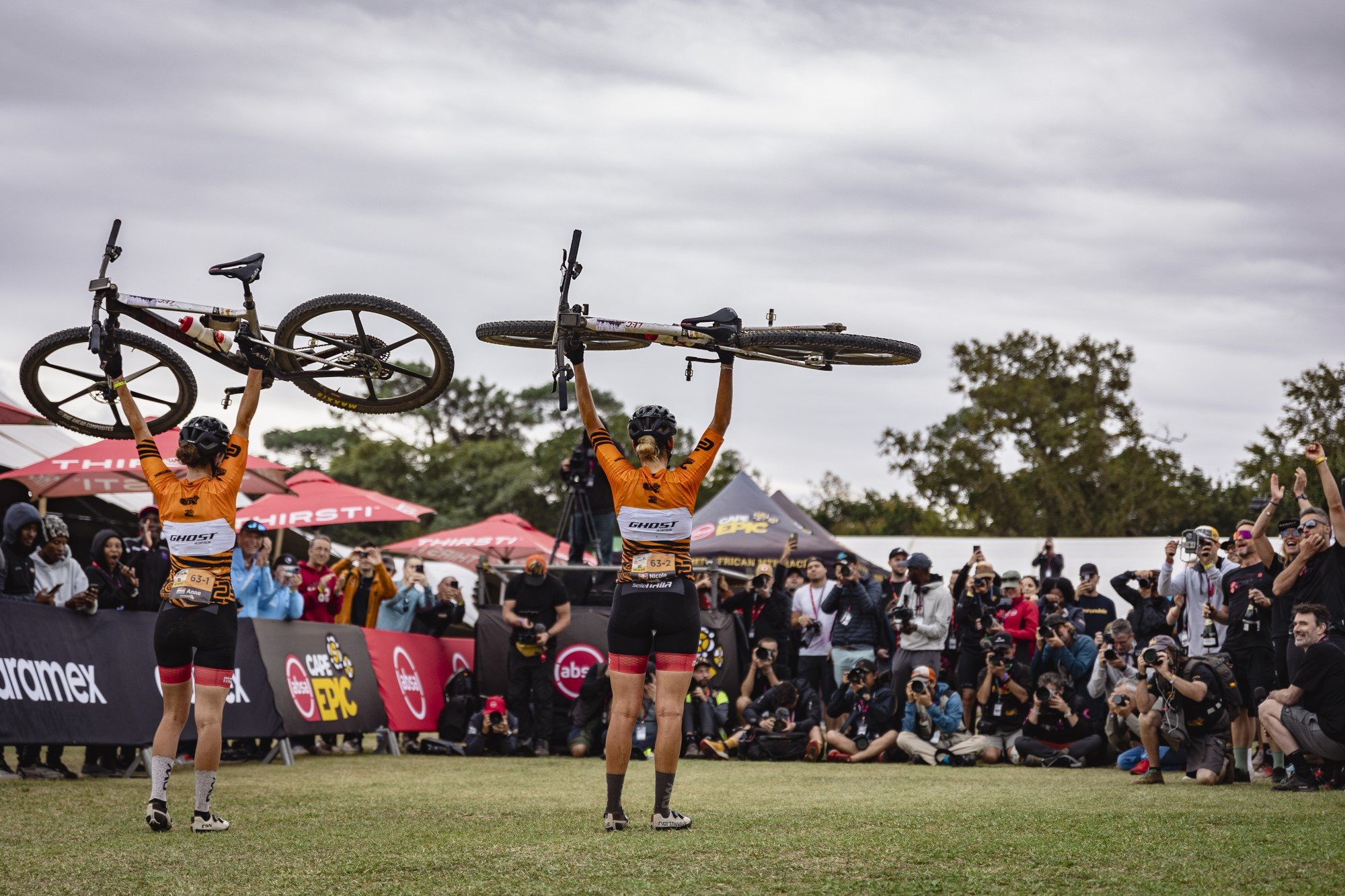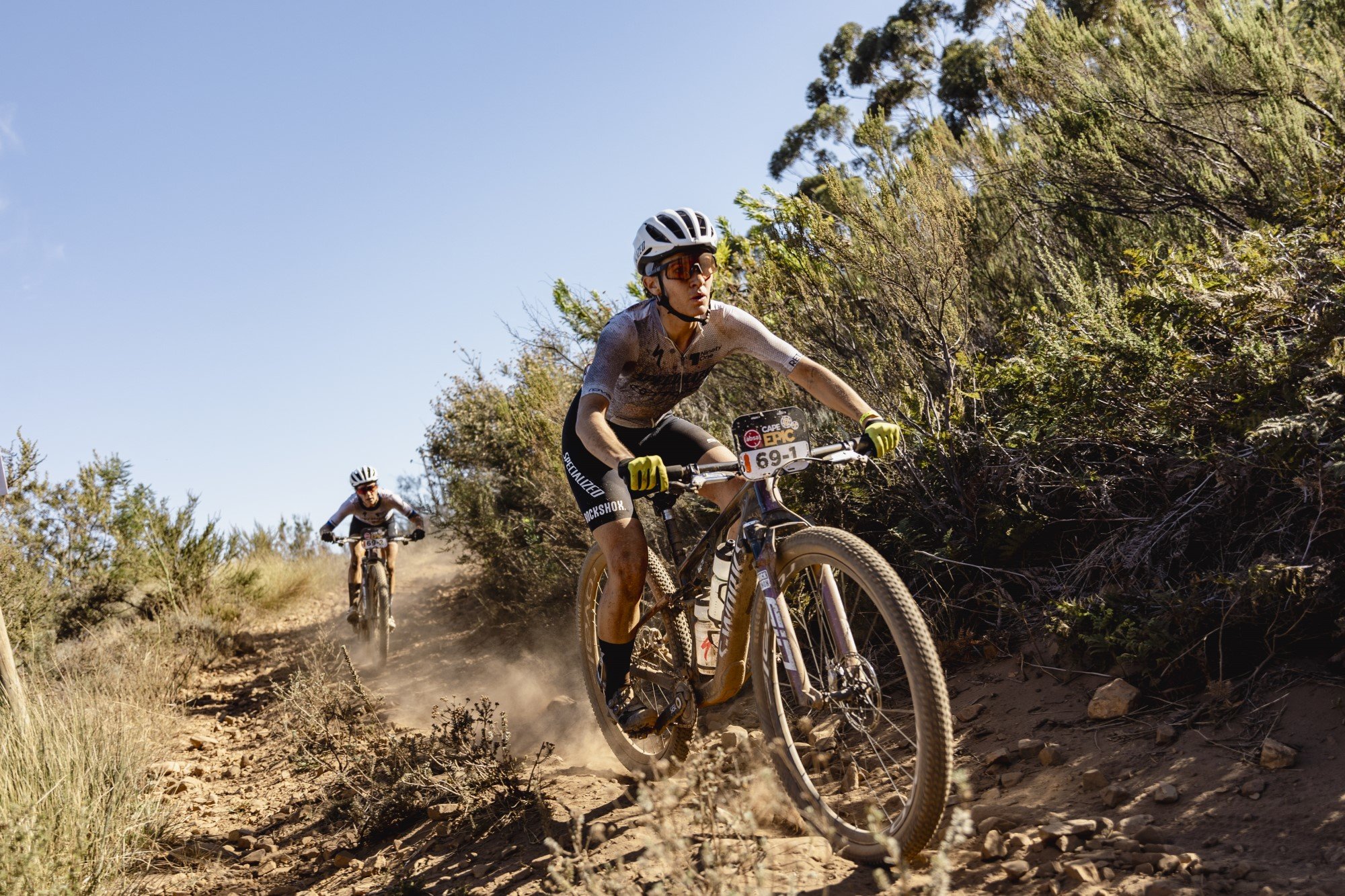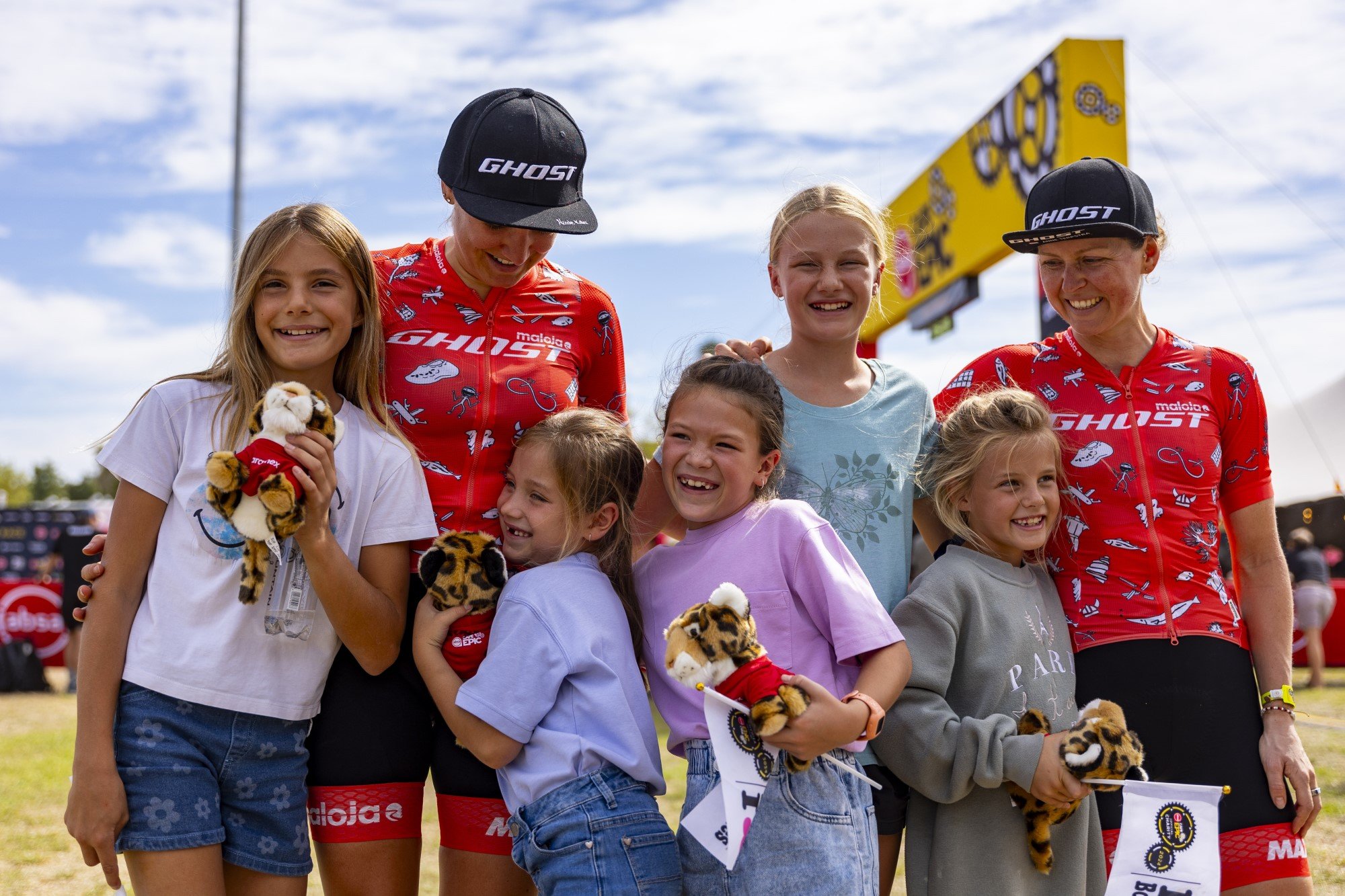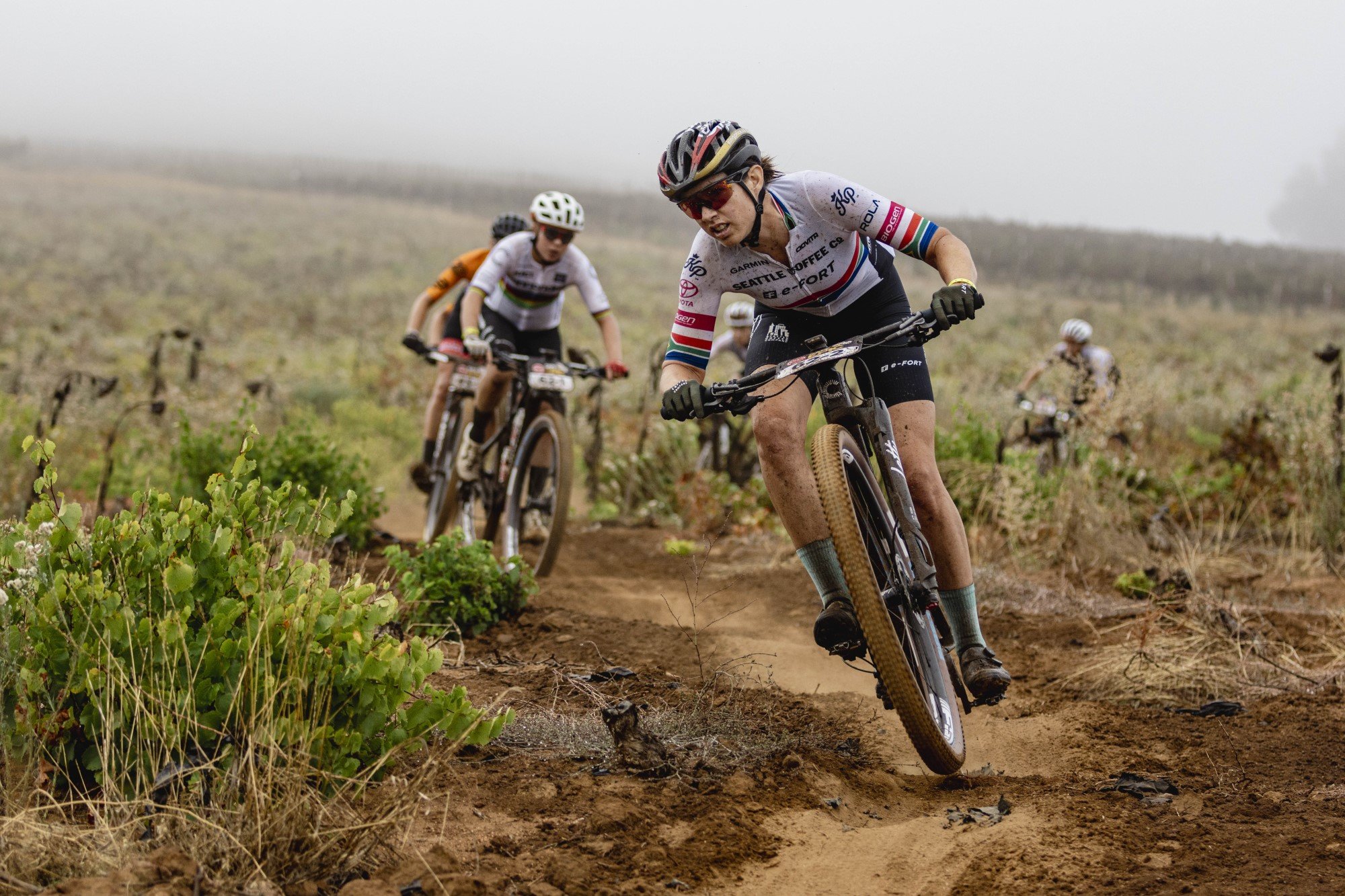
INTERVIEW WITH A TOG
BEHIND
THE
LENS
We caught up with Max Sullivan and asked him what it takes to be an adventure sport, particularly an ABSA Cape Epic, photographer & videographer.
IMAGES BY: MAX SULLIVAN
Max’s bike - components that won’t let me down, sacrificed weight for reliability
Italian steel, handmade & bespoke 29’er mountain bike frame …..all steel frame with reinforced thicker top tube with gussets top end-joints for additional strength, including a matching handmade bespoke stem and front fork. This bike frame build was all done by Daver Mercer, the Boss! Medium size frame. Painted by BMC & Jared the wizard.
Height is 1.72, weight 69kg, BP 115/70 & resting one year Garmin HR average is 51.
- Stans Flow 29-wheel rims with Hope Pro 4 front hub and Hope Pro4 SS specific rear hub. Will be on Vittoria Mescal Cape Cobra’s 2.35 in front and their Barzo Cape Cobra 2.35 in the rear. Tyre pressure - 0.85 bar front 1.2 bar rear
- Chain rings for Epic will be 32/22 ratio, both individually CNC hand machined & tooled from Swiss steel by an engineer friend of mine in Tokai. Wide diameter steel to house the KMC K1 SL chunky SS speed chain.
- Hope Cranks with Crankbrothers Candy 2’s, and Hope threaded bottom bracket
- 1 X 500 ml Aluminium Klean Kanteen bottle on Arundel stainless steel holder. Will use 1.5 litre USWE Outlander hydration pack for Epic
- HANDLEBAR Ritchey, aluminium sanded down to silver finish.
- SADDLE Brooks Swift – same one for years now…this one was made back in 1980 which I took off a very old road bike some years back!
- SEAT POST Aluminium Thomson Layback….also sanded down to silver
- GRIPS large oversize SQlab ergonomic… I don’t use gloves.
- Hope rotors 180mm in front and rear
- BRAKES Hope Tech 3 V4 with silver braided hose…overkill I know! But I need it for the gnarly and testing descents.
1. Max, how did you get into photo and videography? Specifically off-road and cycling work?
I used to be the manager of Imbuko Pro Cycling, where I travelled around the country with them to events and races. In this role, I also took care of finding and managing our sponsors and partners, and I handled all the communications—think press, social media, and email blasts. Naturally, this meant I was always on the hunt for great content to share. We didn’t quite have the budget to get content professionally created, so I literally started out by investing in a better phone making short race highlights, and updating Instagram, Twitter and Facebook. My brother, Justin Sullivan (who was also a photographer at the time, now a DOP), gifted me his first-ever DSLR, and I guess the rest is history! I didn’t dream of being a photographer, nor did I study anything related to it (other than the University of YouTube), so I guess I just happened organically.
2. Do you do other types of “image capturing”? Would it be fair to say that you are more than just a photographer?
To be honest, the bulk of my time at the moment is spent shooting and editing video projects for events or brands. I also do a bit of consulting and social media management, however, the photography side of things is definitely my favourite.
3. How did you get involved in working for the Cape Epic?
I built up a bit of a name for myself over the years in the cycling community, having worked in the industry for a number of years before going full-time freelance. Having attended and shot multiple Epic series events for other people and brands, I was always around and met a lot of influential people. At the end of the day, most of my work comes through relationships and personal connections, not my social media or website. When you are easy enough to work with, put your money where your mouth is and deliver a solid result, chances are you’ll get the gig.
Long story short, I asked my contact if they had a gap for me to fill, and dove head-first into it!
4. What equipment do you predominantly work with – specifically at the Epic – and why?
We might need a couple more pages to list all the items I take with me to events! We use pretty specialised stuff, it’s not just the camera in hand that is important. My gear would differ significantly from someone shooting in a studio or on a set. At an event like the ABSA Cape Epic, you need gear that is hardy, weather-sealed, robust and reliable as the conditions at this event are very harsh and can change on a dime. The above applies to not only my cameras but also my clothes, shoes, camera bags and straps.
I run two Canon mirrorless cameras on a Blackrapid dual camera strap so that they are both readily available within a second. One camera is set up with a wide lens, the other with a long lens. Whether it’s dusty or raining, it’s not always ideal to change lenses out in the field or on the back of a motorbike.
5. What makes a good photographer? Are there qualifications and requirements needed?
Absolutely zero qualifications are required in my line of work. Sure, if you want to work on movie sets, you’ll probably need a qualification to get your foot in the door. For outdoor sports photography, a firm understanding of what you are shooting and what the client aims to achieve is paramount. Again, YouTube is your friend!
In my opinion, a good photographer is someone who is easy to communicate with, punctual, willing to go above and beyond, puts in the hours, nails the brief, and makes the client's life easier. On the technical side, good framing, timing and of course, a good edit are needed.
6. Tell us about a typical Epic day as an image provider. We only see the stunning pics, so the job seems pretty glamorous.
So, like most of the Epic crew, we stay right on site in a separate crew village that's conveniently close to our dedicated media centre. We wake up at a regular time since we're so close to the start, do a quick gear check, pack our bags, fill our water bottles, and load the charged batteries into the cameras. When the gun goes off, I grab some shots, then hop straight onto the back of the moto. I spend about four hours zipping around, chasing the leaders, and sending off some quick mobile edits now and then. After capturing the finish, the prize-giving, and anything else that catches my eye, it's back to the media centre. I’ve got to say, they really take care of us at the Epic. We’ve got a big space with tables and super fast WiFi to work from. They keep us supplied with drinks and snacks all day and even throw in a packed lunch for the crew, so we usually munch and edit simultaneously.
We will spend anywhere between 3 and 5 hours editing in the afternoon, starting with the daily select images for the press release, followed by delivering the pro team photo packages, and lastly anything else on the shot list that isn’t urgent. From time to time we’ll head back out on route to the finish line, or mosey around the race village once our editing is done. After dinner, we’ll have a look over the route for the next day with our bikers, discuss the key points and logistics, plan who shoots what and where, charge up the gear, and get ready to do it all over again!
After a couple of days, you really get into a routine and rhythm. By day 6 of 8, you start getting pretty tired, both physically and mentally.
7. The Epic goes into some really remote and harsh terrain. Tell us about these challenges and, of course, how the elements/weather affect your work.
It gets pretty physical hanging onto the back of a motorbike for 8 days. For the most part, we do the same route as the riders, with deviations for certain trails or farms. Keeping your gear safe definitely needs to be top of mind when out there. We have pretty solid bikers but the risk of crashing is still there. Sometimes, dust can be worse for a camera than rain as it just covers everything and gets in everywhere. Extreme conditions do often yield great results. Severe heat and dust make for great racing images as the riders speed past wet and muddy, which make for awesome finish-line portraits. So, you definitely have to mix up the style of capturing and editing according to the conditions of the day.
8. Finally what advice would you give to young aspiring photographers and videographers? Do you have to have expensive equipment? Biggest barrier to entry? Post-production and editing – would you advise novices to do a course or is it something that you can pick up as you go?
I’d say just start, they always say the best camera to have is the camera in your hand. There will definitely come a time when you will need expensive gear to fulfil a certain job, however up until a certain point, the more expensive gear just makes your job easier. When I first started, I could shoot 3000 images in a day and get 100-200 usable out. With better gear, I can shoot 500 images and get 300 out, so the hit rate, workflow and general features do get better with more expensive gear. Top-tier editing software will cost more than you think on a monthly basis, however, there are lots of great free options to get started with.
Personally, I wish I had committed more time behind my PC, ‘studying’ the software I use and practising editing techniques. There are definitely some courses out there that would be helpful, so do some research and find one that will tick the right boxes for you. The same applies to the actual shooting element, the more you practice the more you’ll learn. I have also learnt a lot from other shooters, so make some connections and tag along to see how others work. I’m always open to sharing my knowledge, so feel free to get in touch if need be.
